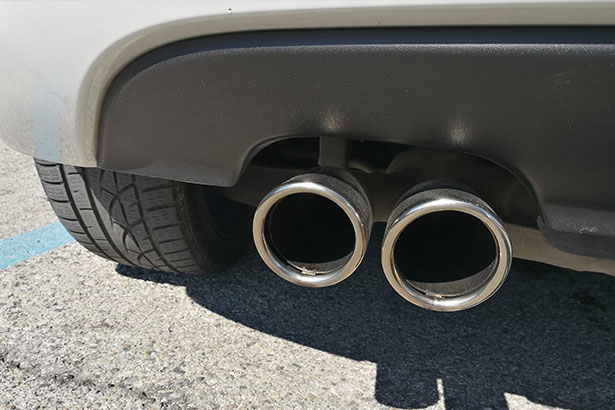
How Are Fuel Consumption Figures Calculated?
Have you checked the fuel consumption figures on that new car you are eyeing and wondered how they are calculated? Or perhaps you have noticed that your vehicle uses way more fuel than was promised by its fuel consumption specs? In today’s world of rising fuel costs and growing environmental concerns, understanding these key aspects of your vehicle’s performance is more important than ever for South African drivers.
In this blog, we dive into vehicle fuel consumption and CO2 emissions, breaking down how vehicle consumption is calculated and what CO2 emissions mean for you as a consumer.
How Vehicle Fuel Consumption Is Calculated In South Africa
In South Africa, vehicle fuel consumption is typically measured in litres per 100 kilometres (L/100km). The way this is determined is by a standard test procedure.
In 2018, the Worldwide Harmonised Light Vehicle Test Procedure (WLTP) replaced the older New European Driving Cycle (NEDC) to determine the fuel consumption of vehicles. For most cars first registered before September 2018, their testing would have followed a procedure based on the New European Driving Cycle (NEDC).
How The Fuel Consumption Test Works
The latest WLTP test is conducted on a laboratory rolling road and incorporates four distinct driving phases: low (city), medium, high, and extra-high (motorway) speeds. By simulating a wider range of driving conditions, the WLTP aims to provide a more accurate representation of real-world driving, resulting in fuel consumption figures that are closer to what consumers might experience on the road.
The New European Driving Cycle (NEDC) is a standardised test used in Europe to measure vehicle fuel consumption and emissions. It consists of two parts: an urban cycle simulating city driving conditions with frequent stops and starts, and an extra-urban cycle representing rural roads with higher speeds and less congestion. From these cycles, three official fuel consumption figures are calculated: urban, extra-urban, and a combined figure, which is a weighted average of the other two.
For South African consumers buying new cars, the fuel consumption figures based on WLTP should be more reliable and representative of real-world performance. It’s important to note that actual fuel consumption can still vary based on individual driving styles, road conditions, and climate factors specific to South Africa.
Types of Fuel Consumption in South Africa
Several categories reflect different driving conditions. These categories help consumers understand how a vehicle might perform in various scenarios typical to South African roads and environments.
Urban fuel consumption represents city driving in major metropolitan areas. This category is characterised by frequent stops and starts, traffic lights, and congestion, typically resulting in higher fuel consumption due to the inefficiencies of stop-start driving.
Rural and Extra-Urban (Highway) categories offer insights into fuel use outside of city centres. Rural consumption reflects driving on country roads and in smaller towns, with more consistent speeds but occasional stops and varying road conditions. Extra-urban consumption measures fuel use during faster, more constant speed driving, typical of long-distance travel on national routes like the N1, N2, or N3.
The Combined figure provides a weighted average of urban and extra-urban consumption, offering an overall estimate for mixed driving conditions. This is particularly useful for comparing different vehicle models and getting a general idea of fuel efficiency.
Additionally, South Africa’s unique landscape necessitates two more specialised categories: Off-Road and High Altitude. Off-road consumption is relevant for vehicles used in mining, agriculture, or safari operations, typically showing higher fuel use due to challenging terrain and 4×4 system engagement. High Altitude consumption is particularly important in areas like Gauteng, reflecting how vehicles perform in thinner air, which can significantly affect fuel efficiency.
CO2 Emissions And Their Impact On You
CO2 emissions are directly related to fuel consumption – the more fuel your car burns, the more CO2 it produces. As an individual, this impacts you in several ways:
- Environmental impact: CO2 is a greenhouse gas contributing to climate change. By choosing a fuel-efficient vehicle, you can reduce your carbon footprint.
- Potential future taxes: While South Africa doesn’t currently have CO2-based vehicle taxes, many countries do. As environmental concerns grow, such taxes could be introduced in the future.
- Fuel costs: Lower CO2 emissions generally mean better fuel efficiency, which can save you money at the pump.
What You Need To Know About Fuel Consumption Figures
It’s worth noting that there’s often a discrepancy between official fuel consumption figures and real-world performance. Studies have shown that this gap has increased over time, with real-world consumption often being 20-30% higher than official figures!
However, even if not perfectly accurate, these figures are still useful for comparing different vehicles. When budgeting, it’s wise to add about 25% to the official fuel consumption figure to get a more realistic estimate of your likely costs.
Want tips on how to save fuel? Here are 10 easy fuel-saving tips for you to try!

